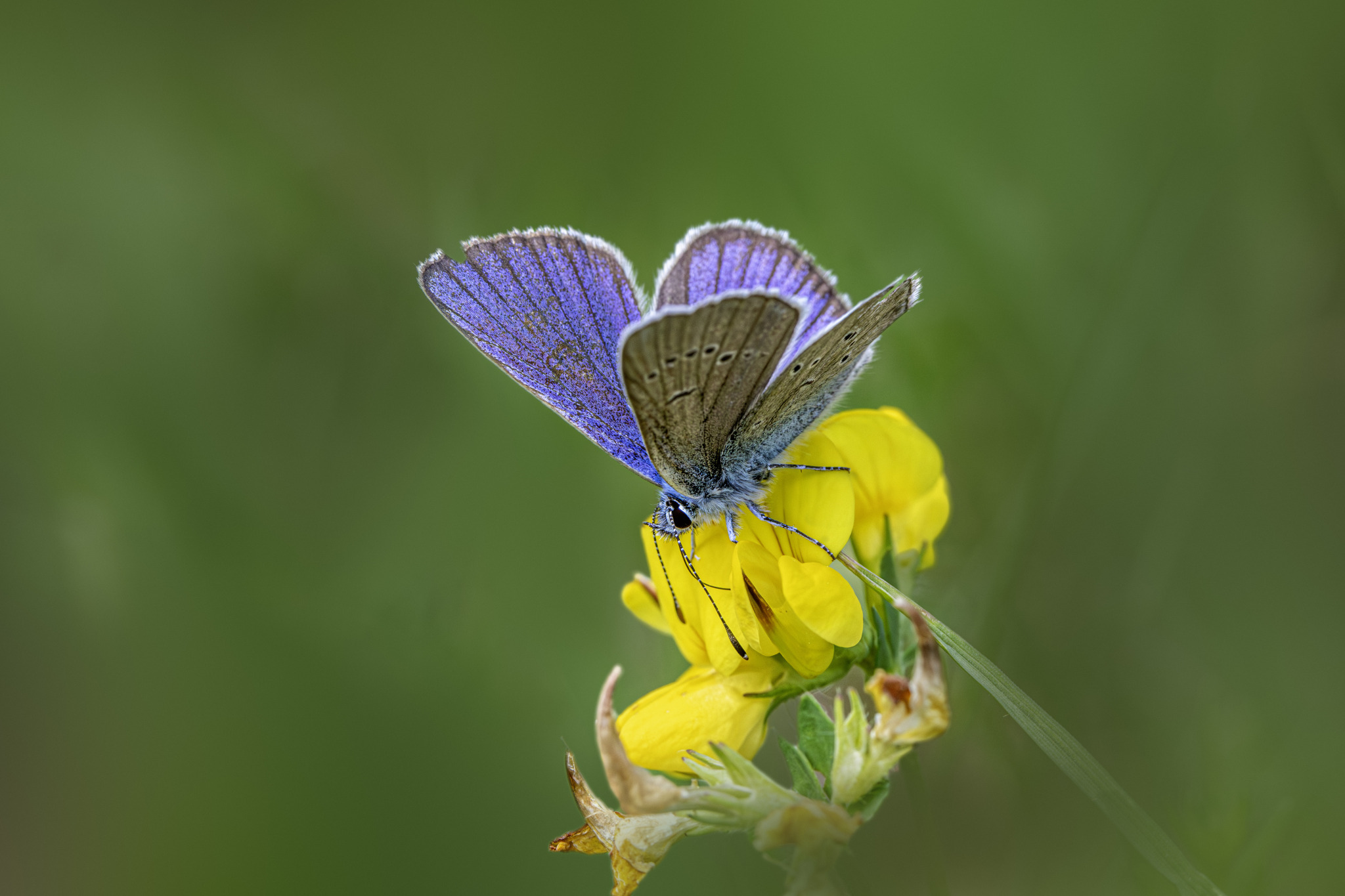The Mazarine Blue (Polyommatus semiargus) is a strikingly beautiful butterfly in the family Lycaenidae, known for its vibrant blue coloration and delicate, understated markings. It is primarily found in grasslands, meadows, and other open habitats across Europe and parts of Asia.
Physical Description
- Wingspan:
- 30–35 mm (1.2–1.4 inches).
- Coloration:
- Males: Deep, iridescent blue upper wings with a faint black border.
- Females: Brown upper wings with occasional blue highlights.
- Underside (both sexes): Pale grayish-brown with small, scattered black dots surrounded by white rings.
- Shape:
- Rounded wings with a clean, smooth outline.
Behavior
- Feeding:
- Adults feed on nectar from a variety of flowers, including clover, vetches, and other low-growing blooms.
- Flight Period:
- Typically from May to July, though this can vary with altitude and latitude.
- Activity:
- Active during warm, sunny days, often seen flying close to the ground.
- Mating:
- Males patrol territories, searching for receptive females.
Habitat
- Prefers open, sunny areas with an abundance of wildflowers, including:
- Meadows and grasslands.
- Forest clearings and edges.
- Alpine and subalpine pastures.
- Found at elevations ranging from lowlands to high-altitude regions, especially in mountainous areas.
Life Cycle
- Eggs:
- Laid singly on host plants, primarily legumes such as clover (Trifolium spp.) and vetch (Vicia spp.).
- Larvae:
- Green and slug-like, with subtle markings to camouflage among leaves.
- Feed on host plant leaves and are sometimes tended by ants in a mutualistic relationship.
- Pupae:
- Form on the ground or among vegetation, often hidden from predators.
- Adults:
- Emerge in late spring or early summer, depending on local climate conditions.
Distribution
- Found across Europe, extending into parts of Central Asia and Siberia.
- Populations are more common in cooler, temperate regions and become scarcer toward the southern limits of their range.
Conservation Status
- Generally considered of Least Concern, but some local populations are declining due to habitat loss and agricultural intensification.
- Thrives in regions with traditional, low-intensity farming practices.
Ecological Role
- Pollination:
- Adults contribute to pollination while feeding on flower nectar.
- Prey Species:
- Provides a food source for birds, spiders, and other predators.
Interesting Facts
- Name Origin:
- The name “Mazarine” comes from its deep, rich blue coloration, similar to the Mazarine blue dye used historically.
- Sexual Dimorphism:
- The male’s vibrant blue contrasts sharply with the female’s more subdued brown coloration, typical of many Lycaenidae species.
- Ant Association:
- Larvae excrete a sugary substance that attracts ants, which in turn protect them from predators—a fascinating example of mutualism.
Summary
The Mazarine Blue (Polyommatus semiargus) is a charming butterfly that adds a splash of color to Europe’s grasslands and meadows. Its ecological role as a pollinator and its fascinating interactions with ants highlight the complexity of its life cycle. Protecting its habitats and host plants is vital to ensuring the survival of this delicate species.
Visited 234 times, 4 visit(s) today
Views: 463
Subscribe to the newsletter:
